










































downtown Louisville.
In 1946 a woman named Edith Wood, a Middletown native, graduate of Anchorage High School and Miami University (Ohio), as well as co-founder of Okolona High School, compiled a story to be published.
fast food restaurants and coffee shops, but historical preservation
This story includes 150 years of Middletown history, from the beginning until that point. The book is called “Middletown’s Days and Deeds.” The 76-year-old book is up for sale on Amazon.
It has been 225 years since
Wood was passionate about Middletown’s history. She initially started to learn about the town’s history from her father. In the 1930s, as the preface of the book reads, she began to jot down what her father was saying to her regarding their town.
Wood is a relative of Thomas Wood, an emigrant from Virginia in the 1800s who headed a large family line that would lead down multiple generations to Edith Wood. She would then research all the way back to Thomas, to find her roots.

until 1792, shortly after the American the 15th state, following the last colony, first state admitted to the Union left of the
Kentucky pioneers, Wood says in her history book, were the first settlers in and around Middletown, and lived in single log cabins or forts. Windows were made of paper that was then smothered with bear grease.
These original Middletownians also ate a lot of meat such as venison and bear. These people led simple lives and ate simple meals.
Although these people led simple lives, they still spent time curating beautiful, rich buildings, at which architecture enthusiasts would gaze in awe
200 years later.
Most, if not all, people who live in Middletown know about the Middletown Inn. It is located right on Main Street.

Wood describes in her book the history of many historic buildings in Middletown. This inn is a building that many people drive past every day, but they would never know the rich history that it holds if people like Wood had not researched and published their findings.

A man named James S. Spear originally bought the Middletown Inn and another

The inn had been passed down nine times from 1808 to 1945. The half brick, half log building with 18-inch walls originally had an oak tree in the dining room.

Edith Wood’s father, William Harlan Wood, designed and created the interior of the Methodist Church. Her grandfather, William Benjamin Wood, built the church in 1899.
Harlan Wood apprenticed under his father, and his daughter, Edith, describes the work he did: “Build today, then, strong and sure, with a firm and ample base and ascending, and secure shall tomorrow find its place.”



Situated in the former United Methodist Church on Main Street in historic
Middletown is the Historic Middletown Museum. The museum holds a lot of life from the past, plaques, newspaper clippings, photographs and posters. Every item holds a story.



The City of Middletown and Historic Middletown Inc., who runs the museum, also hold cleanups at the Middletown Cemetery multiple times per year.
Comments from families and friends of those connected to the past, or the people themselves, flood the comments sections of the museum’s Facebook page, as they reminisce on memories in the city.

Within the city is a Historic Preservation

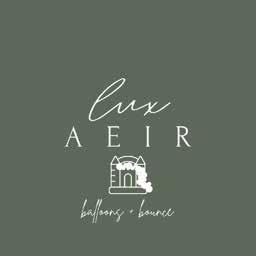
Commission, a subchapter of the City Commission that contains six appointed chair members. One of those chair members is Commissioner Mark Stigers, who has been in the position since 2016.
According to Middletown’s Code of Ordinances, Chapter 33, the purpose of the Historic Preservation Commission is to effect the goals of preserving the heritage and character of the early town of Middletown, by promoting the educational, cultural and general welfare of the public through preservation and protection of historic buildings, places and areas.
Stigers previously held many roles within the Middletown Fire Department, including firefighter, fire marshal and safety officer. He retired from the force in November 2013 as the assistant chief. Stigers also serves as mayor pro tem. Stigers has now been involved in Middletown history and preservation for around 10 years.
“What you see from the street, we review and approve,” Stigers says. “The historic

properties, we really watch those.”
Stigers says most people in the city know about the Historic Preservation Commission.
“We put a little something in the city’s newsletter and website once in a while,” Stigers says. “Most of it is just word of mouth.”


Preserving the history of this town of 9,600 people is important. It allows the younger generations of Middletown to have a glimpse back to the past, and for the older generations to remember the memories that this city holds for them.
Historical landmarks like Middletown’s first gas pump, which hasn’t been pumped since 1936, and the Middletown Inn, established in 1798, are here to stay, and serve as a reminder to those who built the town.
Most know Middletown as a bustling city, with restaurants, schools and families. However, in her book, Wood recommends closing our eyes and trying to picture Middletown in the
beginning: “Let the houses as you now know them vanish. Fill their places with trees and an occasional wigwam or log cabin. Watch the bears strolling down Middletown’s Main Street to Beargrass Creek for a drink of its cool, clear water and a meal of bear grass along its banks.”
Beargrass Creek was where the main road to Louisville crossed.
Wood continues in her book: “See the Indians skulking behind trees, waiting to tomahawk white men out to kill bears for molesting their families. For wild animals and Indians were there to meet the brave and hearty eastern pioneers whom they served as both friend and foe.”
Of course, we know that there is history in our town, but until we put on the shoes of those who formed the Middletown we know now, we will never know the full story.
We should appreciate the full story, and those who are trying to preserve it. For some of us, this town raised us, as it did the generations before us.
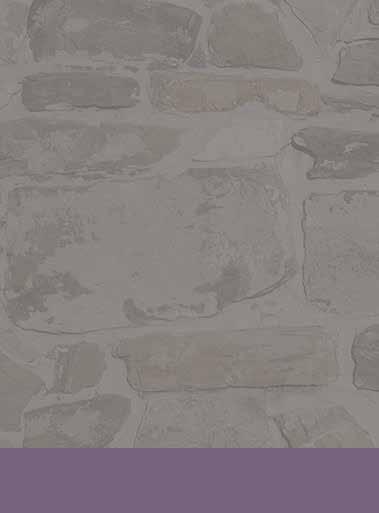



 Writer / Gavin LaPaille Photography Provided
Writer / Gavin LaPaille Photography Provided
Clayton Hensley wasn’t planning on starting a lifetime career when he first got into the gutter business. But that’s exactly what he found.
Clayton was one of many out of work when General Electric went on strike in 1969, and was looking for a way to subsidize his income until things returned to normal. He got a part-time job hanging gutters, beginning a career that has spanned five decades in the home improvement industry.
“When you’re 25 years old and have a house payment, car payment and married, you need to make money,” Clayton says. “I was just looking for a job in anything - not necessarily gutters, just something to work on while they were on strike. By time the strike was over with, I was making more money hanging gutters than I was making at GE so I stuck with it.”
After the owner of the company he was working for retired, Clayton decided to branch out on his own, and started Hensley Guttering and Home Improvement in 1973. He has been in business ever since, offering Louisville homeowners an affordable option for gutters, gutter covers, roofing, siding, windows and doors.
Clayton says it wasn’t his intent to stay in the guttering business this long, but he’s enjoyed it.
“I liked the work,” Clayton says. “You’re not in one place all the time. You’re moving around and meeting a lot of different people every day in different locations.”
Clayton has about 10 people working for him and mainly supports the Louisville area, but will venture to neighboring cities to provide services. Much of his client base comes from referrals or repeat business. Clayton says his honesty has kept him in business so long.
“We sell what people need, not what we make the most money for,”
Clayton says. “There’s nothing we sell or do that I couldn’t do myself if need be.”
Education has also been an important aspect to Clayton as he has grown his business. He regularly attends seminars to learn about new techniques or machinery, and completes 30 hours of continuing education in order to stay certified each year.
“Any business you’re in, you have to stay up on the education of the new material,” Clayton says. “The more knowledge you can have about the product, the easier it is to sell the job.”
Clayton encourages homeowners to look up at their gutters to see if they are behaving differently, including issues like flooding and leaking. Hensley Guttering manufactures their own gutter covers - something Clayton himself is very proud of.
“For over 20 years we have made and sold our own gutter covers,” Clayton says. “That’s a big majority of the business right now.”

Area residents should expect to see Clayton around for a lot longer, as he has no plans to retire any time soon.
“I plan to keep going as long as health will allow me,” Clayton says. “I’m 79. I’m not old enough to retire yet. As long as my health is good and I still enjoy what I’m doing, I’ll keep at it.”
Photography Provided
Annabelle Klein is a fourth-generation pilot, and she knows she’s lucky to have grown up around airplanes and aviation. She’s also aware that many other kids don’t have the same opportunities as she did growing up. In 2015 she founded Flight Club 502 to inspire students to get involved in the aviation field.
Klein says science, technology, engineering and math (STEM) embody every aspect of aviation. She says the curriculum at Flight Club 502 is built around those subjects. Klein wants kids to realize the field of aviation involves more than just flying. Many people don’t realize aviation careers include engineers, air traffic controllers, meteorologists and even marketing specialists.
One differentiating factor of Flight Club 502 is that the organization is a club, not a
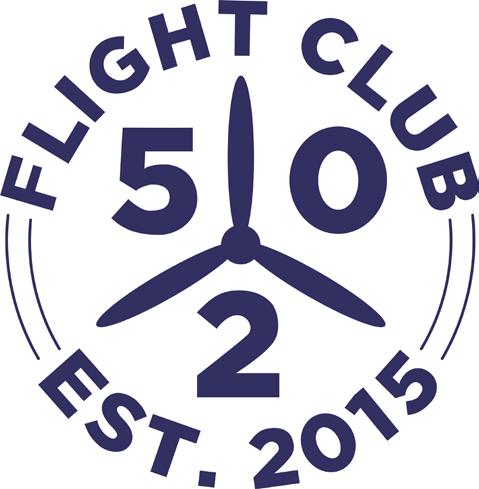

flight school. It’s owned and operated by student members with adult supervision. To become part of the club, you must be a member. Three membership opportunities are available including ground level, flight level and adult advisory.
“The club aspect is very inspiring to me,” Klein says. “We have youth officers as president, vice president, treasurer and so on. Those are usually older kids with committees, with younger teens working on them. For example, our marketing committee has about 10 members working together.”
Each year the club votes on youth officers. Interested members apply and discuss their interest in propelling the club forward. Klein says recently, a member was interested in creating an engineering committee to work with a 3D printer. She says while
adults are there to assist and guide, the club is run entirely by its members.
Klein says she thinks of the club as a youth development program, similar to Junior Achievement but with airplanes. Aviation is just one piece of the program. The club is geared toward youths aged 13 to 21, with some members staying on as employees after they age out of the club. She says only about 40% of members ever actually fly.
“We started doing a lot of outreach, and in 2022 we served 1,200 youth across Kentucky and Indiana,” Klein says. “We do outreach with schools where we go in and open kids' eyes to all the possibilities of aviation. We’ve also worked with The Cabbage Patch Settlement House and Kentucky Refugee Ministries.”
Jonas Gordon serves as collegiate advisor
and has been a member since 2019. He says for the longest time he knew he wanted to fly, but he had no idea where to start. Gordon graduated from duPont Manual High School in 2021. He describes himself as a jack of all trades for the organization, but Klein says Gordon is a crucial player in the club.
“Flight Club allowed me to achieve my dreams of becoming a pilot,” Gordon says. “I love it. Honestly, I don’t know where I’d be without it. I’m here almost every day to help out in as many ways as I can.”

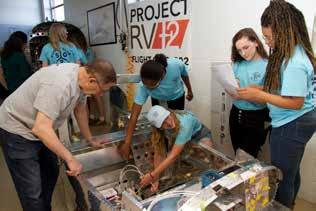

Klein says the executive board has a working board meeting once per month. The eight-member team also meets with the youth president, vice president and treasurer. Student members are encouraged to sit in on executive board



meetings if they’re interested.
Introduction to Flight Club 502 is a prerequisite class for any member seeking to join. The course covers the history of the organization. It also focuses on requirements for a private pilot certificate, aircraft components, basic aerodynamics, flight organizations, jobs in aviation, aircraft systems, use of checklists, taxi procedures, fundamentals of flight, aeromedical factors and aeronautical decision making. Students then choose additional courses based on their aviation interests.
“We have our monthly membership meetings where we have a guest speaker, and then the members break out into their committees,” Klein says. “We also offer one social event each month. In February we had a Super Bowl party. It’s just a fun time to get together.”
Flight Club 502 is based out of Bowman Field in Louisville. Klein says in 2015, the

group started meeting at Hangar 5, the Vintage Warbirds hangar, thanks to Jeff Daus. Then in 2019, the club had grown so much that they needed a bigger space. Klein and company moved into the Central American building next door to the old terminal.
“It was unoccupied for years,” Klein says. “It needed a lot of renovation, but we had volunteers, kids and parents helping us to make it nice.”
Various scholarship opportunities are available for deserving members. Criteria for selection include motivation, needs, merit and availability for training. Funds may be used for any flight-training-related expenses, books and equipment.


“The Flight Club 502 Kentucky Aviation Aerospace Education Endowment was created from a very generous donation by Mark and Kellie Carter,” Klein says. “We hope to let that fund grow while utilizing it
later to sustain and grow Flight Club.”


Part of that growth includes inspiring other clubs in different parts of the United States. In November 2021, Flight Club 502 flew its fleet to Blue Grass Airport in Lexington and launched Flight Club 859. The Flight Across America program is designed to accomplish several objectives including immediate outreach and exposure to Flight Club 502 and its accomplishments. The effort is developed around a framework of establishing a franchise package that includes a startup narrative and a handbook to help create flight clubs across the country.
“The package includes the tasks and steps necessary to establish a Flight Club,” Klein says. “It also provides substantive content and course material that FC502 has developed to conduct aviation-related training, programming, outreach, afterschool programs and summer camps.”
The four pillars of Flight Club 502

are STEM education, patriotism, entrepreneurship and good decision making. Klein says the Gone West program is one way the club embodies patriotism. Gone West is a term used in the aviation industry when someone dies. Klein describes the program as a chance to bring our community together and be thankful for the country where we live.
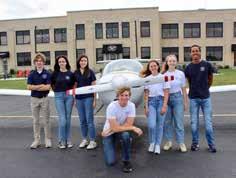
“We had our last Gone West ceremony in October honoring Major General Philip Ardery,” Klein says. “About 150 people attended and we had a flyover. It was gorgeous. We’ll hold our next one in the spring.”
Klein says the club isn’t just important to the aviation community and all of Louisville. She says, to put it simply, it brings people together for amazing opportunities.
“I’ve watched shy kids who wouldn’t look people in the eye become great public
speakers,” Klein says. “I really think it has the ability to change lives. Flying makes people confident. We have a great community of people here who listen to each other and mentor one another.”
Klein now serves as executive director at the age of 25. She says it’s incredible to see how much the club has grown over the years, and it is a full-circle experience for her.
“I never thought in 2015, when we started, this would be my future,” Klein says. “I went off to college in Nashville but stayed on the executive board. I came back to Louisville last year and it’s insane to see how much it’s grown.”
Klein and Gordon hope Flight Club 502 will continue to fly high for years in Louisville and other cities across the United States.
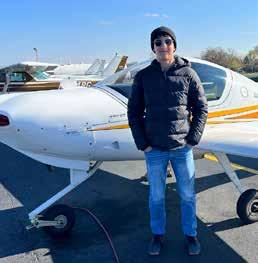
For more information, visit flightclub502.org.


For more than four decades, our mission at KGA has been to celebrate each child's accomplishments, no matter how great or small, while encouraging growth with a positive attitude and mutual respect. We offer competitive and recreational gymnastics, NinjaZone, open gyms for all ages, day camps, First Stop Preschool, birthday parties, and more!





Mark Doty didn’t expect to get a lifelong career when he first showed up at the Belle of Louisville. But that’s exactly what he got.
Doty, the chief operating officer and master captain of the Belle, began his career with the local landmark as a deckhand, which involved cleaning, sweeping and getting the boat ready for events. He then worked his way up to a licensed mate and captain, before taking over as the master captain of the Belle in 2007. In 42 years with the Belle, Doty has done a little bit of everything with the boat and its thousands of passengers.
“I never imagined it would go this far,” Doty says. “I didn’t have any interest in working on a river. That just sort of fell into place.”
Day-to-day life brings a vast number of experiences for Doty, including captaining the Belle on many of its cruises, leading other captains who also drive the boat, and working on maintenance and safety guidelines to keep the Belle safe and running smoothly.
“I’m not stuck behind a desk all the time,” Doty says. “I’m not stuck cruising a boat all the time. We cruise the boat six months of the year, then we strap on tool belts to do
Writer / Gavin LaPaille Photography Provided Mark Dotythe work to get the boat ready for next summer.”
During that time, Doty has watched Louisville go through constant transformations and development.
“I’ve watched the city front get built,” Doty says. “I started down here when there wasn’t much else. Now they have the Belvedere extension, restaurants, developed Waterfront Park, different museums. It has helped us get people down here. Before, people only came when they were offered a trip. People stroll down here all the time for other things now.”
The Belle has been on the water since 1914 and is the only remaining authentic steamboat from the great American packet-boat era. Originally named the Idlewild, the boat first set sail on October 18, 1914 in Pittsburgh, Pennsylvania, and served as a ferry between Tennessee and Arkansas near Memphis. During the 1940s the boat offered moonlight cruises and served as a USO nightspot on the Mississippi River to help with World War II efforts. The boat was later renamed the Avalon and was sold to a group of Cincinnati investors.
It wasn’t until 1962 that the Avalon was put up for auction and was purchased by Jefferson County Judge-Executive Marlow Cook for $34,000 and renamed the Belle of Louisville. Her first appearance under the new name was in the inaugural Great Steamboat Race in 1963, going up against the Delta Queen in what has become an annual tradition during the Kentucky Derby Festival.
There’s nothing more important than making sure our community’s children have what they need to thrive.
When we have strong households, we are creating pathways out of poverty to prosperity, which is a win for all of us.
We envision the Greater Louisville region as a place where zip code doesn’t determine destiny and everyone has the opportunity to live up to their full potential.

Learn more by scanning the QR code or visiting metrounitedway.org/impact

In 1988 the Belle was highlighted as the nation’s oldest and most authentic river steamboat, a designation it continues to hold today. The Belle celebrated its 100th anniversary in 2014, as the only steamboat in history to reach that age.
Doty says he is proud to captain a boat with so much history.
“When you work down here you don’t even think about that aspect of it, just doing the job,” Doty says. “When you step back and look at the whole picture, it’s pretty neat that you’re running one of these antique landmarks up and down the river.”
The engines on the Belle are actually older than the boat itself, having initially been installed on a different boat that burned down the year the Belle was built. They date back to the 1800s, adding to the experience for guests.
“Most people have a good time out on the river,” Doty says. “Even when it’s raining, they come to see the engines. Our engine room is wide open and they can watch that old machinery that is clanking.”
In addition to the Belle, Doty also has its sister boat, the Mary M. Miller, under his guidance. Named for America’s first female licensed steamboat captain, the Mary is a propeller-driven steamboat built in 1985, with a capacity of 450 passengers and a diesel-style engine.
While both boats have a maximum speed of about 12 miles per hour, Doty says the experience driving them is very different.
“With the Mary you can basically land the boat using your engines,” Doty says. “You don’t have to do a lot of steering. You can pretty much put it where you want it. With the Belle there’s no diesel engine, just a paddle wheel. With the Belle you need to




know where you want to be 10 minutes ahead of time. When you’re planning with the wind and the current, you need to plan. It’s 10% heart and 90% luck. Every landing is different and you can’t get used to the same thing or you’ll mess up. I have a little bit of experience but I am surrounded by guys who were here when I started, which really helps.”
The Belle isn’t the only historic landmark under Doty’s guidance. Life Saving Station #10, better known as the Belle of Louisville Riverboats Ticket Office, also holds this distinction, with a history dating back to 1881. She is the only remaining inland Life Saving Station in the United States. She stays dockside and does not cruise as the other two do, with no propellers and no engine.
Doty says having two historic landmarks is an appeal for guests.
“Up until this past year, 80% of our passengers were out of state,” Doty says. “They were coming and knew about us because it’s a national historic landmark. We own two of the historical landmarks in the city limits, and there’s only eight of them. People come to see the history. We operate like they did 100 years ago.”
The Belle continues to offer a variety of experiences for guests, with cruises designed for sightseeing, dining and kids, that go up the Ohio River and take in all the sights. With a capacity of 800, the Belle also hosts many special events designed around holidays, school programs and group events.

Recently the Belle went through shipyard inspection and was told it could stay on the water for 75 years if regular maintenance of the boat is upheld.


“We have a new strategic plan,” Doty says. “We have a lot of meetings and created Friends of the Belle to help raise money for the boat. It just keeps us busy, doing a lot of research for what we need to do. We don’t have a full game plan yet for what our schedule is going to be. We’re changing some things up. We’re not going to just be a party boat. We want to be more educational.”
Doty has had a number of memorable experiences in his career with the Belle including the many steamboat races and meeting celebrities like Muhammad Ali, Roger Staubach and Carol Channing. He’s hoping to have many more as he continues to lead the Belle down the river.

“I’m not tired of it yet and I just turned 60,” Doty says. “I’ll keep going until I get bored with it, but after 42 years I’m not there yet. I’m not going anywhere. They’ll have to kick me out. I don’t really know anything else. It’s been a pretty good life.”








1. Children in a school?
2. Sailor’s assent
3. Couldn’t stand
4. Kind of team
5. Fiesta fare
6. Olympic activities
7. Club ___
8. Make shadowy


9. Yoked pair
10. Spare parts?
11. Eye problem
19. Impolite look
20. Less civil
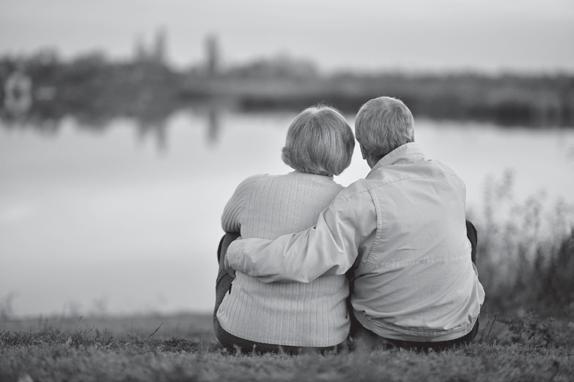
21. Diary fastener
22. Suspicious of 24. Aries, for one
26. Religious factions
28. Estimating, ___ out




Cancer is scary. No one wants to face a cancer diagnosis. It can be tempting to put off getting screened for cancer just so you don’t have to face the possibility of a diagnosis.
However, cancer screening should be considered an important part of your overall health, just like your annual visit to a primary care provider or keeping up with your medications.
Knowing when to be screened for certain types of cancer is key. The guidelines and recommendations are different for each type of screening. Your primary care provider can help guide you on which cancer screenings are recommended for you and when to start. The
guidelines below are a good place to start.
Why is early detection important? When cancers are caught in earlier stages they are easier to treat, and this gives you a far better chance of survival. Treatments are also less invasive when cancer is caught in earlier stages.
Most importantly, don’t wait until you have symptoms. Even if you don’t have symptoms or a family history, you could be at risk for cancer. Getting cancer screenings on a routine basis will ensure your doctor has a baseline to compare to, and this ensures early detection. Talk to your doctor regularly and be an advocate for your health.
It’s recommended that women start getting annual mammograms at age 40 to screen for breast cancer. If you have a family history of breast or other cancers, talk to your doctor about getting a mammogram at an earlier age.
MAMMOGRAMS ARE AVAILABLE
AT SIX UOFL HEALTH LOCATIONS, INCLUDING:
• UofL Health - Medical Center Northeast, off of Old Henry Road, opened a new breast care center earlier this year. To schedule a mammogram at Medical Center Northeast, call 502-210-4321.

• UofL Health - Medical Center East, on Dutchmans Lane, also offers a dedicated breast care center. To schedule an appointment at Medical Center East, call 502-259-6408.
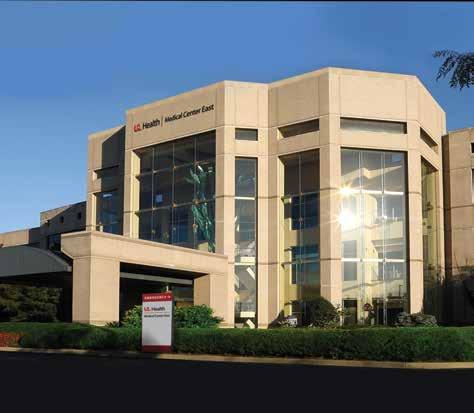
• UofL Health also offers mammograms through the mobile screening unit.
For patients who have a family history of breast cancer and are interested in genetic testing, UofL Health - Brown Cancer Center also offers a High Risk Breast Clinic. To learn more, call 502-562-HOPE (4673).
Symptoms of breast cancer may include a new lump in the breast or armpit, thickening or swelling of the breast, irritation or dimpling of breast skin, redness or flaky skin in the nipple area, pain or pulling in of the nipple area, nipple discharge other than breast milk, including blood, change in the size or shape of the breast, and pain in any area of the breast.


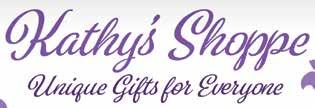


Screening for colorectal cancer can be done through a variety of tests. The United States Preventive Services Task Force (USPSTF) now recommends colorectal cancer screening in all adults starting at age 45 through 75.
The most effective screening is a colonoscopy, which only has to be done once every 10 years if you’re not considered high-risk. Colonoscopies are outpatient procedures and typically take a day for recovery. The procedure detects precancerous polyps (which are removed during the procedure) and cancer. A colonoscopy is performed by a gastroenterologist, general surgeon or colorectal surgeon. Colonoscopies are offered at UofL Health - Medical Center East and other locations throughout Louisville. To find a provider, visit uoflhealth.org/screenings.

Take-at-home stool tests are also an option, including FIT and Cologuard. These look for blood in the stool, or both blood and DNA changes suggestive of colorectal cancer. These can be done through a primary care provider.



Symptoms of colorectal cancer may include changes in bowel habits, blood in or on your stool, diarrhea, constipation or feeling that the bowel doesn’t empty all the way, abdominal pain, aches or cramps that don’t go away, and unexplained weight loss.
Kentucky has one of the highest rates of lung cancer in the U.S., and lung cancer is the number-one cause of cancer deaths in the U.S. among both men and women. Yet,the American Lung Association reports that only 13% of those who are considered high-risk actually get screened for lung cancer.
Smoking is the number-one risk factor and accounts for 80 to 90% of lung cancer cases. The USPSTF recommends annual lung cancer screenings for adults aged 50 to 80 who have a pack-year smoking history of 20, and currently smoke or have quit smoking within the last 15 years. A pack-year is calculated by the number of years smoked multiplied by the number of packs smoked per day. For example: two packs per day x 10 years = 20 pack-years.
Lung cancer screening is done through a quick, low-dose CT scan, and because it captures scans of the whole torso, it can catch other cancers such as breast or colorectal cancers.
Low-dose CT lung cancer screening is available at eight UofL Health locations, including UofL Health - Medical Center East and UofL Health - Medical Center Northeast. Call 502-210-4497 to schedule your lung cancer screening at any of the locations.


Men should talk to their doctor about when to start screening for prostate cancer. Those with an average risk should start at age 50. However, certain groups such as those with a family history may need to start at age 40, and black men should start at age 45. Screening is done through a PSA blood test, which can be done at your primary care provider’s office. A digital rectal exam is also recommended.
The UofL Health - Brown Cancer Center Cancer Screening Program is here to help. If you have questions about cancer screening, need assistance with scheduling a screening, or would like to invite someone from the team to your community event to offer screening information, call 502-210-4497.

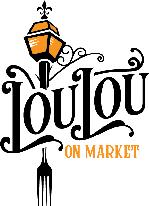












Dee Dee Taylor, owner and chief executive officer of 502 Hemp Wellness Center, hopes to educate the local community in a growing industry that could show a number of natural health benefits.

“We have way more to do with the education side and actually take the time to help our customers pick the product to fit their needs, not necessarily what we want to sell them,” Taylor says. “I think that is so important in today’s day and age with the
plethora of products that are available. It is important that people know how to use the products correctly to receive the maximum benefits from them, and to know they are high quality is absolutely essential.”
502 Hemp offers a variety of hempbased products that are legal because of a federally approved program authorized under Section 7606 of the 2014 Farm Bill, established by the Kentucky Department of Agriculture. This bill allows for the
production, manufacturing and shipping of hemp products across state lines. In 2018 the federal Farm Bill made access to hemp products even easier.
“Hemp and marijuana are actually the same plant,” Taylor says. “What distinguishes them and makes hemp legal is the Delta 9 threshold. Ultimately there is no difference between hemp and marijuana other than the Delta 9 THC percentage. It’s legal because our products are derived from
hemp, and they’re considered hemp because of that Delta 9 THC limit.”
Taylor’s journey into the hemp business started on a personal level. Her husband, John, suffers from grand mal seizures and wasn’t seeing the results he wanted with his prescribed medication. After looking for a more natural alternative, John learned how to make CBD oils and began taking them. The impact was felt quickly, as John stopped having seizures for five years and has only had eight seizures since 2010 - a drastic decrease from the two to four per month he was having previously. In 2014, when Kentucky started the Hemp Pilot Program, John and his business partner were one of the first to be licensed as processors. They’ve since been in business making quality, safe products with Kentucky hemp.
Seeing John’s results, Taylor began using the same CBD oils to help with her deliberating anxiety and panic attacks, noticing a remarkable difference. With the impact
the oils had on her family, she decided to switch career paths from working in the law industry to focusing full time on the hemp business.
“The more I learned, the more I decided I wanted to start offering these products to others,” Taylor says. “I want to help educate and change the tides on people being so dependent on big pharmacy and pills, and get them to try something that is much more natural, without side effects. There are a lot of people out there who are still scared of hemp. They think it’s a drug or that it’s harmful, or they will get high from it. You can’t get high from CBD oil, but you can feel euphoric from Delta 9 THC and Delta 8 THC products, or you can use it just to get some sleep. It’s all about the education side and how to use these products properly.”
Taylor began her foray into her new business by setting up shop at fairs and festivals around Louisville, using the name KY Beauty and Wellness. Getting many



questions surrounding the legality of the products, she found a passion for educating her new customers and learning about new advances in the hemp industry.
“I feel like I got my start at flea markets,” Taylor says. “Back in 2016 everyone was asking what I was selling and if it was legal. It was a lot of explaining. People’s biggest question was if they were going to get high from CBD oil. Some people were disappointed and some were happy to try it once I explained the possible benefits. For almost two years I would just set up at different events, and in the downtime I would deliver products directly to my customers.”
In 2018 she decided to open up her first actual store, located on Moser Road off of Shelbyville Road in Middletown. The hemp business was getting more mainstream, and Taylor was concerned about products sold by bigger retailers that potentially weren’t as safe for consumers. She wanted to be fully
transparent with her customers about how her products are produced and tested. Plus, she wanted customers to get the education they needed, instead of just buying a product to buy it.
Late last year, Taylor expanded with the opening of her second store, known as 812 Hemp, in Clarksville, Indiana. She has eight part-time employees working for her in total, including certified cannabis consultants and CBD educators. Customers range from those with serious illnesses looking for pain relief to those in need of some extra rest. She says cannabis products should be a first choice, not a last resort, for many ailments.
“I was really nervous and scared to open the first store,” she says. “I knew it was a big change from being a paralegal. Luckily, my legal background has helped a lot, including navigating some of the political processes. In the beginning I asked myself if I was doing the right thing and if I was going to

be successful. I think I managed to prove I have been by having integrity, only carrying quality products, and actually caring about my customers. I have notes all over my office wall thanking me for helping them for many different reasons. It was never about the money. It was and is about helping my customers find relief with quality hemp products.”
Taylor’s work has continued to be recognized. In 2022 she was appointed by Kentucky Governor Andy Beshear to his Medical Cannabis Advisory Committee. On September 21 of last year she was commissioned a Kentucky Colonel for her advocacy work in the cannabis industry, and advocating for legal hemp products and restrictions on Delta 8 products instead of an all-out ban. She also received the 2023 entrepreneur BOOM Award from the Jeffersontown Chamber, and was previously included in the 20 People to Know in Health Care by Louisville Business First.
Taylor is also a board member of the Kentucky Hemp Association and an honorary board member for Kentucky Moms for Medical Cannabis, plus she was nominated as one of Today’s Woman’s Most Admired Women for 2023.
502 Hemp was recognized as a finalist for the Better Business Bureau's Torch Award for Ethics in 2023. In 2022, 502 Hemp won Business of the Year and the 2022 Diversity, Equity and Inclusion Award by the Prospect Area Chamber. 502 Hemp also won the 2022 LEO Readers’ Choice award for Best CBD Oil, and the Best of the Best from the Courier Journal.
502 Hemp is also the official hemp/CBD product partner for the Kentucky Derby Festival for 2019, 2020, 2021, 2022 and 2023.
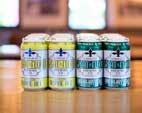
While Taylor continues to fight the perception of what hemp is and worries what the future holds in the marketplace,
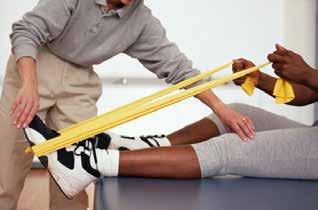



she plans to continue growing in the local market and expanding nationwide in the future. With the upcoming five-year anniversary of her first store, she is very proud of all she has accomplished.



“October will be our five-year anniversary,” Taylor says. “I’m honored and humbled by that. Most small businesses don’t last that long, especially with all the politics in the background trying to limit hemp products. I wasn’t even sure I would survive if I didn’t help get the regulatory laws passed for Delta 8 THC. I know in my heart that the more people I can help with my products, the better. I absolutely love hearing my customers' success stories. Even if it just involves getting more sleep, I love to hear it. That’s what I live for.”
For more information on Taylor’s story and 502 Hemp, check out 502hemp.com or swing by the store at 201 Moser Road, Suite B in Louisville. Call them at 502-654-7100.
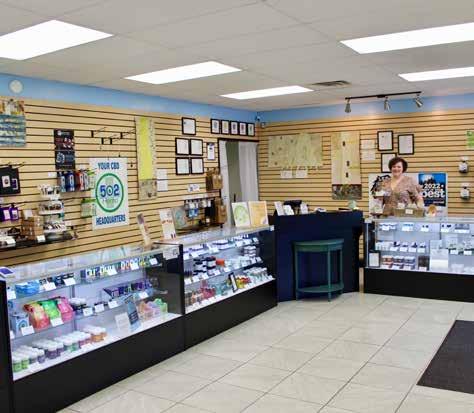


It’s the time for soft flannels, cozy cardigans, pumpkin-spiced lattes, getting lost in corn mazes and watching football games. I love being bundled up in a new coat and scarf, the crunch of leaves beneath my boots, and sitting outside at a bonfire on those chilly, moonlit nights. I can’t resist going on a hayride with family with a cup of warm cider in hand. You know what that means? It’s fall. It’s time to embrace the change of seasons. Here are 12 must-do ideas to complete your fall bucket list.
It’s time for warm fall drinks like apple cider, hot chocolate (add some peppermint for extra deliciousness) and pumpkin-spiced lattes. Make these drinks at home or pick them up from your local coffee shop. You can also make adult drinks like a boozy cider, mulled wine or an old fashioned.
Grab a basket and visit the local apple orchard. Pick your favorite variety of apples and stop at the apple store for caramel apples, cider, doughnuts and all sorts of apple goodies. When you get home, look up recipes for apple desserts like bars, cobblers, crisps, dumplings, pies and tarts. I always like to make a big batch of homemade apple butter and apple sauce.

The number of corn mazes you can tour these days is amazing. They range from easy to very difficult. Gather a group of friends and stop at a corn maze. Makvve sure to dress in long-sleeved shirts and pants to protect yourself from the corn stalks in the maze. Plan to tour the maze in teams of two and see who’s the first one to make it through the maze. Award the winning team a prize.
Make the outside of your door and front of your home festive with a fall wreath, mums, hay bales and other autumn decor. My neighborhood holds a “who decorated their door best” contest every year. I’ve never won, but I’ve got my fingers crossed for this year.
It’s the time for butternut squash, chicken tortilla, chili, and all of the mouthwatering soups and stews you can imagine. Serve them with hot, buttered rolls or cornbread. I have a friend who hosts a chili party every fall with crockpots of different kinds of chili, and a bar with all the chili toppings.
It’s time to hit the pumpkin patch. Go on a hayride to your chosen field, and select a few pumpkins to decorate your home and to carve jack-o’-lanterns. Stop at the store and buy mini pumpkins, gourds, and the very important slice of pumpkin pie to go. Even better, pick up a whole pie to share.

At Harmony at Tucker Station you can retire on your terms. From social outings, exercise classes, wine nights, and much more at your fingertips, come see how Harmony is redefining retirement.
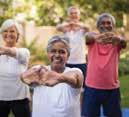


There’s nothing more fun than a neighborhood block party with friends and family. Celebrate the new season with a crackling bonfire and hot dogs with all the fixings. Don’t forget dessert: hot chocolate and s’mores.
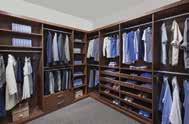



Check your closet and look at your coats. If you need a coat, now’s the time to buy one before the cold weather arrives. Bundle up with your coat and scarf, and take a walk in the crisp, cool, autumn weather. If you don’t need a new coat, you can always buy one for someone else or donate one.
It doesn’t matter if it’s a high school, college or professional football game, they are all fun. Wear your favorite team’s jersey and cheer them on. If you can’t attend in person, watch a game at home with all of the fun treats like subs, nachos, potato skins, wings and more.
It’s a thrill to watch the change of seasons. Stop by your favorite city or state park when the fall foliage is at its peak and take in the beauty. It’s a joy to look at the different hues of brown, orange, red and yellow leaves. Don’t forget your camera.
It’s the perfect time to take a new family photo. Whether you hire a professional photographer or take the photo yourself, celebrate a new season with a new photo. Smile!
Some of my most cherished fall memories are going to the drive-in theater with my friends and family. Gather a group of friends and family in the comfiest car, and settle in for an evening of tasty food and fun films. If there is no drive-in theater nearby, rent or borrow a projector and watch a movie outdoors. Make it extra special by serving buttery popcorn, caramel corn and a selection of retro candy (or the candy you ate as a child).
Charles St. Clair worked in marketing and advertising for more than 20 years before walking away with the dream of owning his own business.
He found the perfect solution in Floor Coverings International.
“I looked at a number of different opportunities, but I wanted something that would meet a real need for the customer,” he says. “No one calls me because they’re curious. They need a solution and that excites me. We’re not cold-calling people, trying to sell them something they don’t need or want.”
In addition, the national company that has been in existence for more than 30 years offers franchise opportunities (St. Clair covers the Louisville East area) and a different experience than the typical floor-shopping consumers have seen in the past.
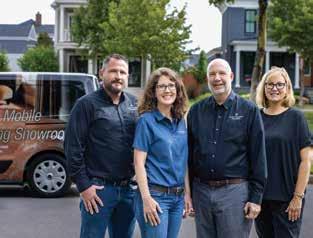
“We come to you,” St. Clair says. “We want to make floor shopping as easy as possible for the customer. We’ll assess the problem, listen to what you are looking for and show you examples right there at home.”
St. Clair says this part of the process is important because the customer is able to see the flooring under their own lighting, paint colors and furniture.
Often, under the artificial lighting in a big-box store, the flooring can look different than it ultimately looks in your home.
Of course, the service is also convenient.
“It creates a different experience,” St. Clair says. “If we don’t have what you’re looking for, we’ll go find it and bring it back. We do all the leg work, and that really drew me to the brand. I could see the value that service added for our customers.”
Floor Coverings International offers a wide range of products

from carpet to luxury vinyl and hardwood.
St. Clair only works with topnotch manufacturers and says he has to carry products he can stand behind. However, flooring doesn’t have to break the bank.
“The market changes over time,” he says. “A lot of people wanted hardwood in their bedrooms and now the trend is carpet. We saw hardwood flooring slow down a bit when lumber prices went through the roof during the pandemic, but truly, all different products are popular in the home.”
Even if the customer isn’t sure what they want, St. Clair and his team have seen it all and can help walk them through the process.
“We’re going to make the process easy for you, show you all of the options and all of the various price points,” St. Clair says. “We want to find the best solution at the best price, and what works for the customer.”

In addition to typical floor options, St. Clair also offers hardwood refinishing, custom rugs and stair runners. The company offers ceramic and porcelain tile options for your backsplash, tile shower and more.
St. Clair will be celebrating two years of business soon, and is excited to move to a new brick-and-mortar location in September at 12224 Aiken Road, Suite 309 in Middletown.

In the West, where successful athletes are rewarded with multimillion-dollar contracts and glamorous lifestyles, competitive sport is seen as a predominantly secular activity.
Any reference to spirituality typically emerges only as an afterthought - the occasional genuflection in the end zone, pointing to the sky after a base hit, or giving all credit to God in the post-game interview (of the winning side of course).
In the East, on the other hand, sport itself is often transformed into a contemplative discipline with the aim of moral and spiritual development.
This article aims to introduce Western athletes to the possibility of viewing competitive sport as a form of spiritual practice and an apt arena for self-discovery.
The idea of sport as a spiritual endeavor has not been completely lost on the West.
The Esalen Institute in Big Sur, California,
is dedicated to the scientific study of human potential, and Michael Murphy, one of its co-founders, has spent a lifetime exploring the transformational potential of sport.
An avid golfer, Murphy has earned a bit of a cult following thanks to the popularity of his novel “Golf in the Kingdom,” a semifictional account of his encounter with
an enigmatic golf pro, Shivas Irons, who sees golf as a “microcosm of the world, a good stage for the drama of our self-discovery,” and as a “vehicle for training the higher capacities…the ultimate discipline for transcendence.”
According to Shivas, one can tell a great deal about a man’s spiritual development by watching him play golf: “A man’s style o’ play and his swing certainly reflect the state of his soul. It’s an X-ray of the soul, this game of golf.”
In a more empirical project, Murphy coauthored a book with Rhea White called “In the Zone: Transcendent Experience in
Sports,” in which they catalogued a wide range of extraordinary feats and experiences in sports, while drawing parallels with transcendent experiences reported by mystics and yogis.
A major aim of the project was to show that the mystical traditions of both East and West offer a framework for understanding the often profound and transformative nature of peak experiences in sports.
Far from being reserved solely for psychonauts like Murphy, such a lofty view of sports is mirrored by the likes of legendary NBA basketball coach Phil Jackson. In his book “Sacred Hoops,” Jackson explains how he used Zen philosophical principles to build a personal and team ethos that helped his teams win an unprecedented 11 world championships.
Affectionately referred to as “the Zen master,” Jackson highlights the importance and beauty of transcending the egoic sense

“Fundamentally, the marksman aims at himself.”
—EUGEN HERRIGEL
of self through competition: “What makes basketball so exhilarating is the joy of losing yourself completely in the dance, even if it’s just for one beautiful transcendent moment.”
Viewed through a spiritual lens, the anxiety of a pressure-filled situation or the agony of a difficult defeat can be a sign that some aspect of the ego still needs to be worked through. As Jackson puts it, “Losing is a lens through which you can see yourself more clearly and experience in the blood and the bones the transient nature of life.”
Whoa! Slow down. We’re getting a little woo-woo here, don’t you think? What does transcendence even mean anyway? And how do we measure that?
Despite the popularity of books like “Golf in the Kingdom” and “Sacred Hoops,” the application of Eastern philosophy to sports has failed to gain any real traction in applied sport psychology, as a result of the field’s
commitment to a positivist ethos that values quantitative empirical data as the litmus test and sole determinant of truth.
One problem is that the more mystical aspects of Eastern traditions, such as ego transcendence, do not easily lend themselves to measurable and teachable skills. Consequently, these ideas have not been well-received by empirically minded researchers and practitioners of applied sport psychology.

The paradoxical nature of Eastern philosophy also poses a problem for many Westerners. While paradoxical concepts such as “effortless effort” or “caring without caring” (“The Inner Game of Tennis,” Gallwey, 1974) exist comfortably in Eastern cultures, they do not tend to travel well in the hyper-logical West.
In an attempt to satisfy the Western scientific expectation of objectivity, Eastern

ideas have been camouflaged under terms that are perceived as being less spiritually and culturally loaded, such as mindfulness and flow.
Several mindfulness-based approaches have been developed for the purpose of performance enhancement, the most notable being Mindfulness-AcceptanceCommitment, and Mindful Sport Performance Enhancement.

While these approaches have shown promise in enhancing athletic performance, they remain firmly situated within a Western skills-based paradigm, in which the mindfulness construct is presented without reference to its religious and cultural origins.
In its original cultural context, mindfulness was not merely a performance enhancement strategy, but rather a metaphysical worldview and approach to living whose broader goal is actually to suspend conscious evaluative processes and,


ultimately, to transcend the ego.
Flow, the psychological concept most associated with the elusive experience of “the zone,” also includes the idea of transcending self-consciousness as one of its defining characteristics. Research on flow experiences in the sports context, however, tends to downplay the role of ego-transcendence in favor of more tangible features such as heightening of the senses and slowing of time.
For the most part, then, applied sport psychology has adopted a very pragmatic approach in which Eastern ideas and practices are often divorced from their metaphysical content and presented as just another tool in the sport psychologist’s toolbox.

Shortly after the turn of the new millennium, a handful of brave scholars
called for a re-examination of the role of spirituality in sport. Over the last decade, this call has been answered and spirituality is slowly becoming viewed as a worthy topic of study in sport psychology, as evidenced by increasing numbers of journal articles and book chapters appearing in reputable publications.

Because the early stages of research on any new topic tend to be exploratory and descriptive in nature, progress has been greatly facilitated by a growing acceptance of qualitative research methodologies in the field of sport psychology. My own doctoral dissertation is an example of the sort of qualitative study that just 20 years ago might have raised a few eyebrows.
Although this shift in the field toward the inclusion of more diverse perspectives and methodologies is encouraging, it remains to be seen whether the more mystical and transcendent aspects of Eastern philosophy can be effectively integrated

into psychological training for sport and performance in the West.
As sport psychologists begin to consider the spiritual dimension of sport, they might find that sports offer a way to make sense of Eastern philosophical concepts that have generally appeared esoteric and unapproachable.
Conversely, by viewing sports and competition through the lens of spirituality, athletes might discover a new way of seeing themselves, whereby the spiritual athlete can serve as a model for a way of being in which “flesh helps soul no less than soul helps flesh” (Heard, 1937).
In the end, we just might open our collective minds to the possibility that there is ultimately no gap between the secular and the spiritual.
With you in the pursuit, Dr. Dave
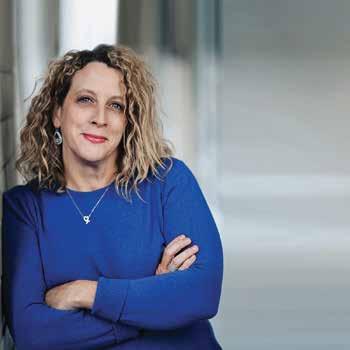








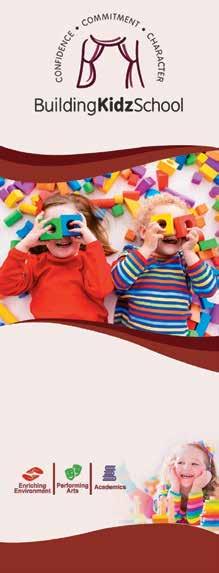

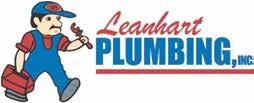


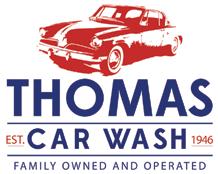





We are the face of discovery at UofL Health –Brown Cancer Center. With academic research and leading-edge clinical trials you can only get here, we help save lives with less invasive treatments. And as one of the leading centers in the world to pioneer promising new cellular therapies like TILs and CAR T-cell therapy, we cure the incurable.

We are one of the only centers in the area with CyberKnife® , delivering radiation using pinpoint accuracy. And Monarch™ , a robotic endoscope that diagnoses lung cancer in hard-to-reach areas, even at early stages.
Our multidisciplinary team of specialists focuses exclusively on your form of cancer. By making the impossible possible for the past 40 years, we help you face cancer with new hope.
Melanie Townsend, MD Otolaryngologist/Head & Neck Surgical Oncologist